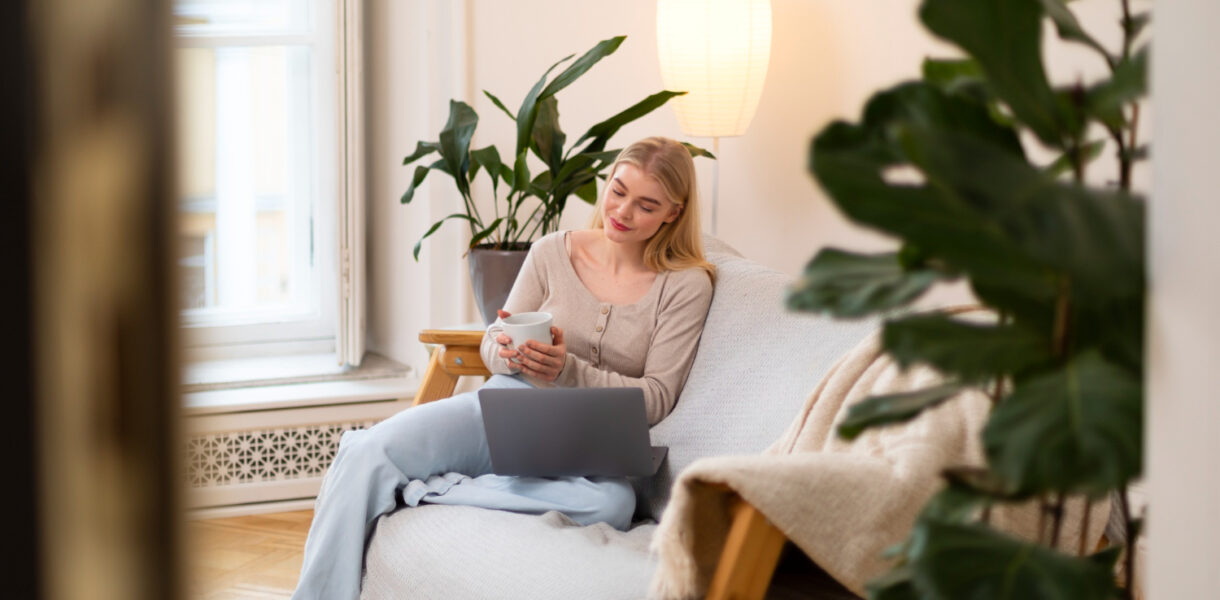Color palettes and furniture arrangement and aesthetic themes, oh my! Interior design is one of the most fun aspects of setting up a new home – but what about the life you’ll live in it? Lifestyle design goes quite a bit deeper, and it starts with a strategic choice of house or apartment. Here’s what you need to keep in mind.
Demographics and psychology
Start by taking stock of the various material factors that determine your day-to-day life. These span everything from your income bracket to your community. Here are some questions to get you started:
- What do you do for a living? Is that a long-term career?
- Do you want to change where you’re located?
- Do you prefer urban, suburban, or rural living?
- Would you rather rent or own?
- What do you hate having in your neighborhood?
You’ll probably come up with a few more as you go. Don’t forget things like transportation and nearby facilities.
Next, reflect on the immaterial factors that influence your notion of an ideal living space. These include your personal values, interests, likes and dislikes, your fundamental beliefs, and your deal breakers. For example: you’re a fan of history and the fine arts, but you’re not much of an outdoorsy type. Your ideal home will then have museums and galleries in the area, but you can do without gyms and sports fields. Or: you highly value the environment, so you’d rather live in a place that has a robust recycling program, and you’d absolutely despise being forced to drive everywhere.
Functional needs
What would you like to spend most of your time on? This will inform the practical features that your living space will need to have. Consider your family situation, any side hustles, your hobbies, your passions, and your social habits.
If you often have people staying over, you’ll need guest bedrooms and possibly more bathrooms. Children, especially teens, should each have their own room too. If you’re working from home, you want a dedicated office tailored to your professional activities. If you run your own business from home, consider production spaces, e.g. a studio or workshop.
Bookworms and researchers might dream about a private study or a household library. A passionate cook will want a smart kitchen with ample storage and counters, while a fashion lover might trade bedroom space for a luxurious walk-in closet. If you love to host and entertain, you’ll want a large patio or other appropriate venue – maybe one indoors and one outdoors.
Your environment
The immediate surroundings will heavily influence your home design, whether you’re looking to buy a house, searching for apartments for rent, or building from scratch on your own land. Factor in the temperature, lighting, noise, and local animals and plants.
If you’re settling down in a cold climate, you want good insulation, a robust heating system, and maybe even a central fireplace. Conversely, if you’re in a hot environment, look into AC, pools, fans, and the like. If your area gets plenty of sunlight, take advantage of it with large windows, sunrooms, balconies, gardens, and outdoor lounges.
City dwellers should account for the heat-trapping effects of concrete, and the reflected glare off of steel and glass. The height and layout of nearby buildings will also affect your light levels and the strength and direction of any wind you’re exposed to. Urban apartments might need bird deterrents and vine management. Suburban homes might struggle with lawn weeds and raccoons or foxes, while a rural homestead might have to be ready for inconvenient tree roots and larger or more aggressive wildlife.
Future plans
Try to do some futureproofing for your new living space. Of course, you can’t predict what tomorrow might bring, but you can make a few educated guesses and plan accordingly. For instance, can you reasonably expect to acquire dependents in the following few years? Perhaps you’re planning on children or you might move your elderly parents in with you. Opt for a flexible home design so that you can repurpose spaces as the need arises. In the same vein, you might want to invest in multipurpose furniture and smart storage solutions.
Appropriate budgeting
By now you’ll have a pretty clear picture of your new home, so start estimating what it’ll cost you. If you’re looking for a rental, bookmark a few real estate platforms and start filtering the available listings. Choose a few areas, define the kind of property you’re looking for, and make note of the asking prices. Compare the value you would get for the money, e.g. the amenities, location-based perks, accessibility, etc. This will give you a realistic range of potential future rent costs so you can plan long-term.
If you would rather buy a home or build your own, you may need to talk to a bank or other lender to come up with a workable amount of money. Take into account the various transactions that will contribute to the total price, like property taxes, mortgage payments, maintenance, potential renovations, and the cost of any landscaping. If you’re building from scratch, you need to account for the costs of materials, labor, tools, and transport. You’ll also be looking at several inspections and assessments to make sure your project complies with codes and standards.
Your priorities
Once you have a budget in mind, start prioritizing the various features you considered in the previous steps. List them all in order of decreasing importance, then sort them into must-haves, could-negotiates, and nice-to-haves that you could give up without regret. Use this priority list to inform your choice of floor plan. Keep an open mind in terms of space distribution and use, too. For example, maybe a room was meant as a children’s playroom but you could convert it into a home office. A flexible attitude will give you more opportunities for a custom home even if you aren’t building it from the ground up.
To sum up, choosing your ideal living space entails more than picking a place close to work and coordinating the decor. You need to consider the characteristics of the area and the community, the environmental factors and the functional needs your space must fulfill. Then you have to come up with a reasonable budget and choose a layout that caters to your priorities, but that’s still flexible enough to adapt to future circumstances. All this might seem overwhelming or just dull, but these things will directly impact your long-term experience in your new space – they shape the palette of your lifestyle design.






